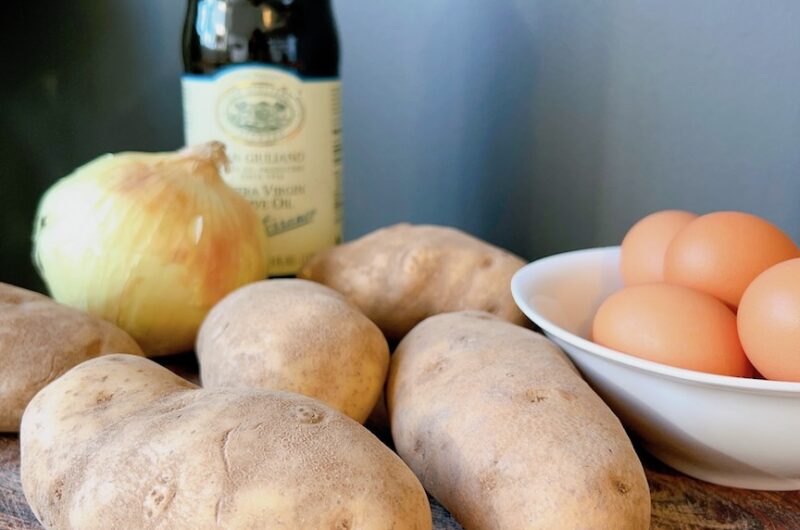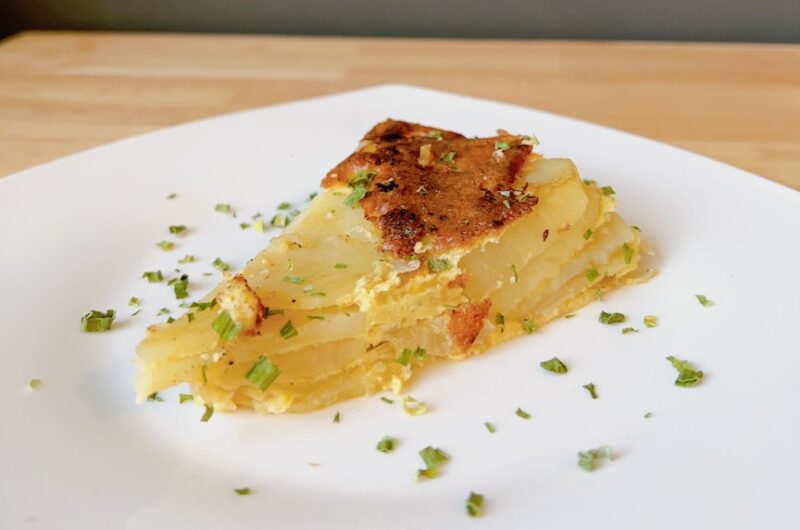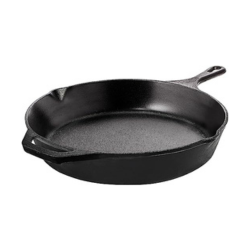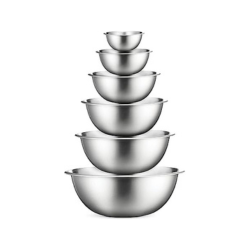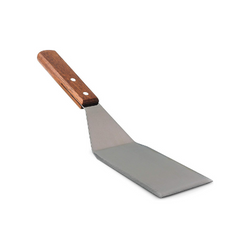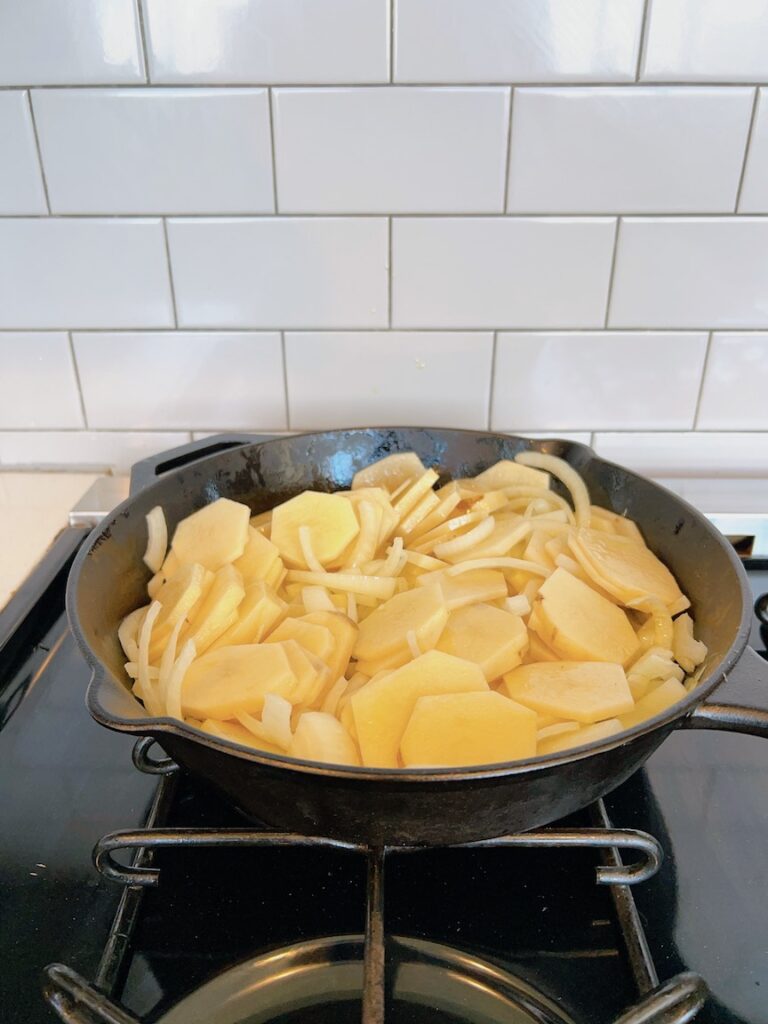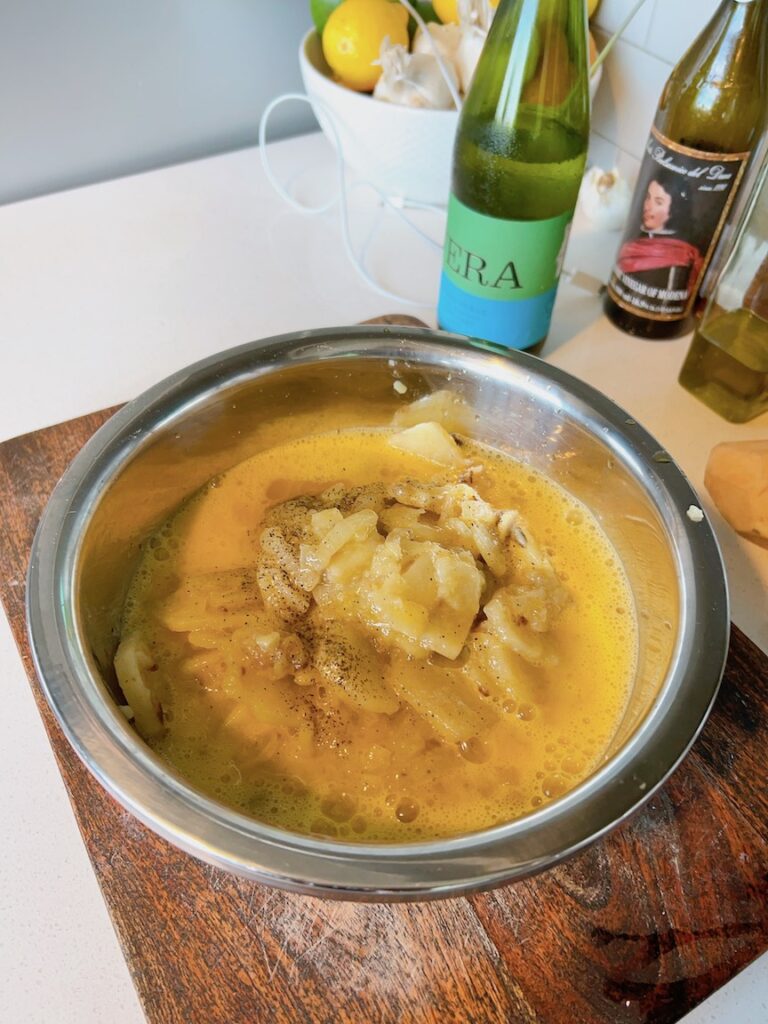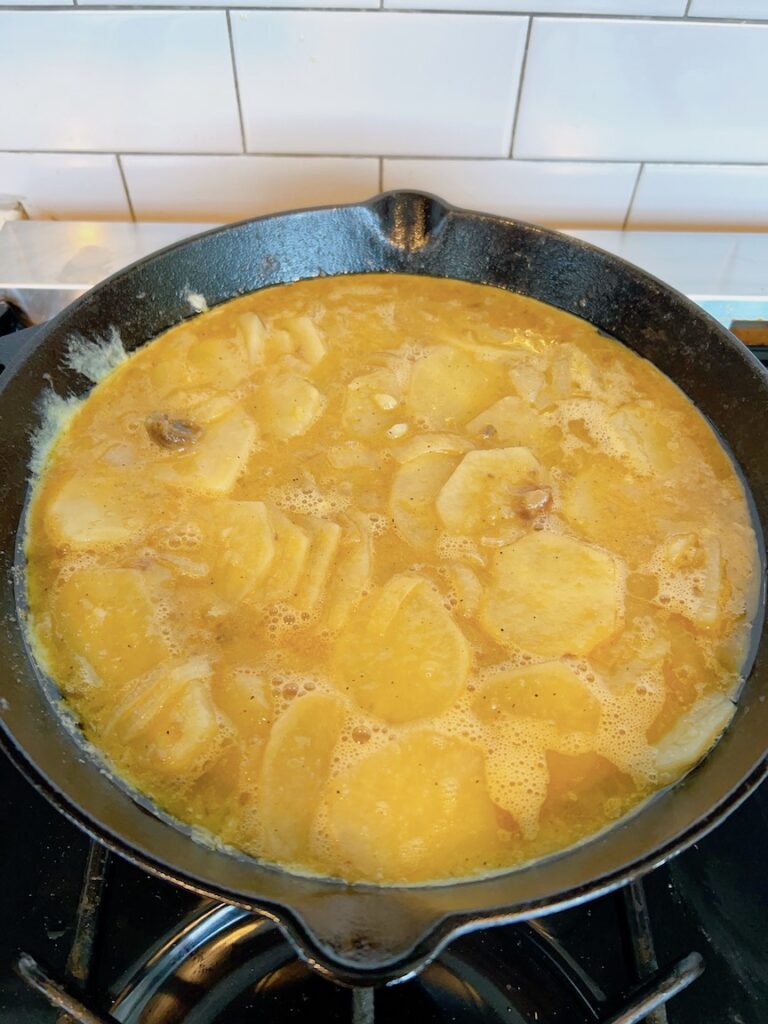“Tortilla de Patatas” is one of the most iconic dishes to hail from Spain. It’s often referred to as a Spanish omelette in predominantly English-speaking countries. The dish is a staple in Spanish cuisine and is typically made with just a few simple ingredients: potatoes, eggs, onions (although the use of onions can be a matter of debate), salt, and olive oil. The name ‘tortilla’ in Spanish simply means ‘small cake’, reflecting the shape of the dish. It’s neither really a tortilla nor an omelette, in the classic sense of either dish.
First, potatoes and onions are peeled and sliced, then fried in olive oil until they are soft and translucent. The cooked potatoes and onions are then drained, leaving just enough oil to cook the eggs. The drained potatoes and onions are added to beaten eggs and mixed well. This mixture is then poured back into the pan and cooked over low heat until it’s almost set. Once set, the omelette is flipped so the other side can cook and form an outer crust.
The result is a thick, round omelette of sorts with a soft and creamy interior and a slightly golden exterior. The dish can be served hot or cold, and it’s commonly cut into small squares or wedges when served as a tapa.
What is the origin of Tortilla de Patatas (Spanish omelette)?
Despite its widespread popularity, the dish’s precise origins are not entirely clear, although there’s a generally accepted hypothesis about its beginnings.
The Spanish tortilla is believed to have originated in Navarre, a region in northern Spain, during the first Carlist War in the early 19th century (1833-1839). The story goes that General Tomás de Zumalacárregui invented the tortilla de patatas as a simple, fast and nutritious dish that could satisfy the appetites of his war-torn troops. The dish was ideal because it was easy to prepare with readily available ingredients – potatoes and eggs – and could be carried around and eaten even without cutlery.
However, this account is considered more of an urban legend than a historically verified fact. It’s worth noting that potatoes, originally from South America, were introduced to Europe following the Columbian exchange in the 15th and 16th centuries, but they didn’t become a staple in the Spanish diet until the 18th century.
Regardless of its true origin, tortilla de patatas quickly became popular throughout Spain. Its simplicity, versatility, and the fact that it can be eaten hot or cold made it a favorite for family meals, as well as a typical tapa found in virtually every bar across Spain.
Today, tortilla de patatas is a staple of Spanish cuisine and one of the most commonly served dishes in Spain. It is enjoyed in homes, bars, and restaurants, and is often featured at celebrations and gatherings. It’s a simple and humble dish that has become a symbol of Spanish gastronomy worldwide.
What’s the history of tapas in Spain?
Tapas are small dishes or appetizers that are a central part of Spanish culture and culinary tradition. The word “tapa” literally translates to “cover” or “lid” in Spanish, which provides a clue to the origins of this practice. There are several theories about the history and origin of tapas.
One of the most practical and widely accepted theories is that tapas originated as a practical solution to a couple of issues. Taverns would serve small plates of food (cheese or ham, for example) to be placed over, or used as a “lid” on, wine glasses to keep fruit flies out. This practice was supposedly common among taverns in Andalusian towns like Seville and Cádiz, where sherry was often served in glasses with a plate of tapas on top.
Another popular theory suggests that tapas were invented by King Alfonso X, ‘The Wise’, of Castile. It is said that while he was recuperating from an illness, he had to eat small portions of food with his wine between meals. After recovering, he declared that no wine should be served at inns throughout the land unless it was accompanied by food, to prevent the alcohol from going straight to the drinkers’ heads and causing rowdy behavior. This royal decree might have helped to establish a tradition of serving wine with small snacks that has persisted to this day.
Yet another theory ties the tradition of tapas to King Felipe III, who supposedly passed a law in order to curb rowdy drunken behavior, especially among soldiers and sailors. The law stated that when one purchased a drink, the bartender was to place a cover or ‘tapa’ containing a small quantity of food on top of the glass. The hope was that the food would slow the effects of the alcohol, reduce rowdiness, and fill the stomach to prevent overdrinking.
Regardless of the true origin, the tradition of tapas has been fully embraced by Spanish culture and has evolved over time. Today, tapas have gained popularity worldwide and are synonymous with Spanish cuisine.

